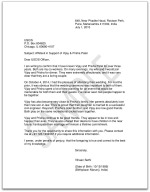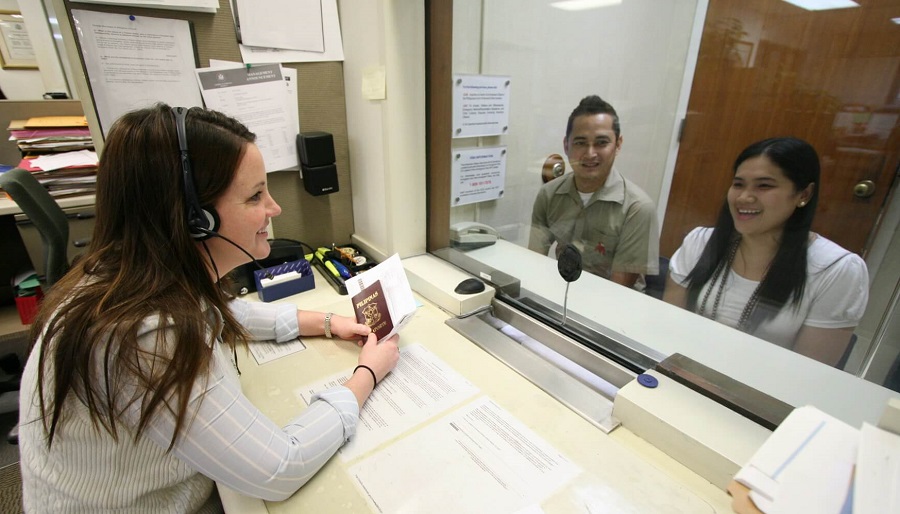
When filing Form I-130, Petition for Alien Relative, on behalf of a spouse, it’s necessary to submit evidence that you have a genuine, bona fide marriage. This can be more challenging for a couple that hasn’t had time to join financial accounts or have children. Affidavits from friends and family can help support the petition. As you review our I-130 affidavit sample, learn the essential elements to include and mistakes to avoid.
I-130 Affidavit, Explained
An I-130 affidavit is a written statement from friends, family members, or associates who can attest to the genuine nature of your marriage. It is essentially letter that someone writes to the U.S. government that indicates the writer is a witness to your marriage and knows certain facts. The affidavit serves as a personal testimonial that your marriage is genuine, not arranged solely for the purpose of obtaining a green card.
Affidavit of Support for I-130
Are you looking for an affidavit of support? The affidavit of support is a different document. The I-130 petition beneficiary generally needs to submit a Form I-864, Affidavit of Support, along with their green card application. This affidavit of support is submitted along with an adjustment of status application or during the consular application process. Learn more >>
Why You Need an Affidavit for a Spousal I-130 Petition
U.S. citizens or lawful permanent residents that want to petition a spouse for a green card have an additional burden (compared to other family-based immigration cases). Couples must prove that they have a real marriage and not a "sham" marriage. A sham marriage is when at least one of the parties of a marriage entered into the marriage for the purpose of circumventing immigration laws to falsely obtain a green card (or other immigration benefits). These fake marriages can result in harsh penalties, including steep fines and jail time. Therefore, USCIS takes additional steps to ensure these spousal relationships are genuine, bona fide marriages. The burden of proof is on the couple to establish the bona fides of the marriage. Affidavits can strengthen your I-130 petition by providing additional evidence of your bona fide marriage.
For many new couples, they haven’t had time to combine bank accounts or have children. What’s more, many couples are separated by distance. They can’t live together until the spouse is able to immigrate to the United States. So they don’t even have a shared residence. In these instances, it’s beneficial to have a secondary form of evidence known as an affidavit. The I-130 affidavit is simply a legal statement from a third party that describes your relationship.
The I-130 affidavit is an opportunity for a third party to provide testimony about the bona fides of the marriage. It’s a way for people that have first-hand knowledge of your relationship to share their stories.
Who May Write Affidavit
Any third party who is familiar with your marriage may write an I-130 affidavit. The person who writes an affidavit is an affiant. Typical affiants include friends, family members, or religious leaders.
There is no requirement that the writer must be a U.S. citizen or even live in the United States. But remember, they should be a close confidant that is familiar with the couple’s life together. So the writer should very familiar with the couple.
How to Write an Affidavit to Support a Couple
The I-130 affidavit is the writer’s opportunity to testify to their personal experience with the couple and share observations that led to the conclusion that the couple has a real marriage.
USCIS is looking for a factual testimony that explains the details of what was observed of the relationship. Additionally, they want to know how the witness knows the couple, and what the witness has seen that provides weight to the claim of a bona fide marriage.
The affiant swears to the affidavit’s truth. When submitting affidavits to USCIS, we recommend that you provide a typed letter. Every I-130 affidavit should cover these basic points:
- Full name and address of affiant
- Date and place of birth
- Relationship to I-130 petitioner and spouse
- An account of your relationship explaining:
- How you met the couple
- Time frame you have known the couple
- Give a sense of the frequency (i.e. socialize on a monthly basis)
- Details explaining how the person acquired this knowledge (i.e. friends)
- Date and signature
Remember, the I-130 affidavit is supporting evidence to prove that the couple has a bona fide marriage. So the affiant should ideally provide a short account of why they believe this is true. The affiant can use a story that demonstrates the couple’s mutual commitment, the hard work that the couple has put into the immigration process, or how the couple interacts with each other.
The I-130 affidavit does not need to be notarized, but it should include a sworn statement. For example, you can include, “I swear, under penalty of perjury, that the foregoing is true and correct to the best of my knowledge.”
I-130 Affidavit Sample
CitizenPath has prepared an I-130 affidavit sample that you may forward to friends or family that are willing to write a letter of support. The downloadable PDF file includes a list of the basic points that the writer should cover in the letter and the I-130 affidavit sample. Use the sample I-130 affidavit as an example. Remember, each letter is unique and should contain elements that are personal to your story.
The affiant should be honest and use anecdotes to demonstrate why they came to the conclusion that the couple has a bona fide marriage. Although it is not necessary in most cases, the affiant should understand that they may be required to testify before an immigration officer as to the information contained in the affidavit. Download the I-130 affidavit sample >>
Tips for Writing a Strong I-130 Affidavit
- Be Specific: Provide detailed anecdotes that illustrate the relationship.
- Stay Truthful: Ensure all statements are accurate and truthful.
- Professional Appearance: Type the affidavit and ensure it is free of grammatical errors.
- Sworn Statement: While a notarization is not required, the affidavit should include a sworn statement.
Common Mistakes to Avoid
- Vague Statements: Avoid general statements without specific examples. Statements with real-life examples carry more weight.
- Omissions: Ensure all required components of the affidavit are included.
- Inaccuracies: Double-check all details for accuracy. Providing an account with dates that don't match the couples time line could be problematic.
About CitizenPath
For more resources and detailed guidance on the immigration process, use CitizenPath to prepare your I-130 petition.
CitizenPath provides simple, affordable, step-by-step guidance through USCIS immigration applications. Individuals, attorneys and non-profits use the service on desktop or mobile device to prepare immigration forms accurately, avoiding costly delays. CitizenPath allows users to try the service for free and provides a 100% money-back guarantee that USCIS will approve the application or petition. We provide support for the Immigrant Visa Petition Package (Form I-130), Adjustment of Status Package (Form I-485), and several other immigration services.
Want more immigration tips and how-to information for your family?
Sign up for CitizenPath’s FREE immigration newsletter and
SAVE 10%
on our immigration services







